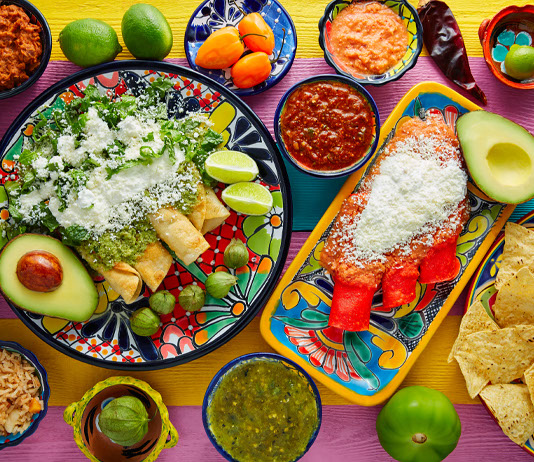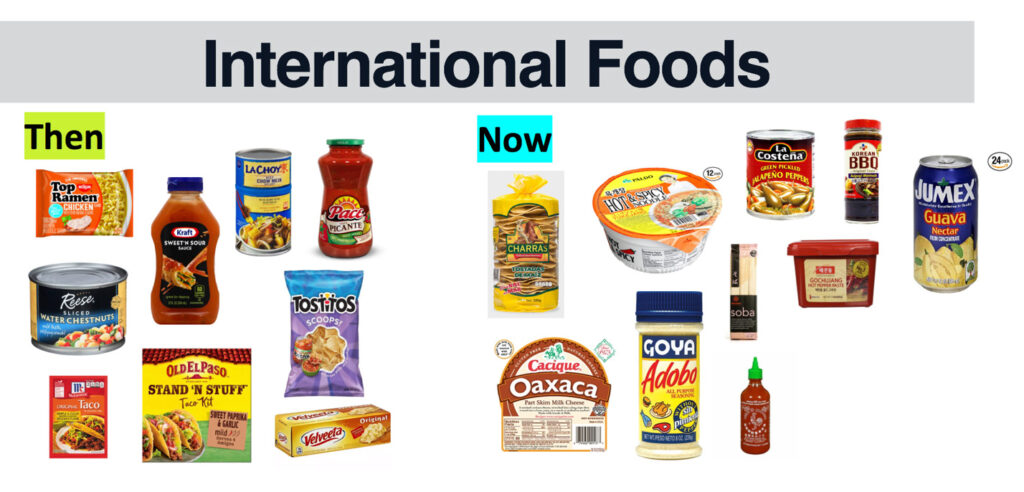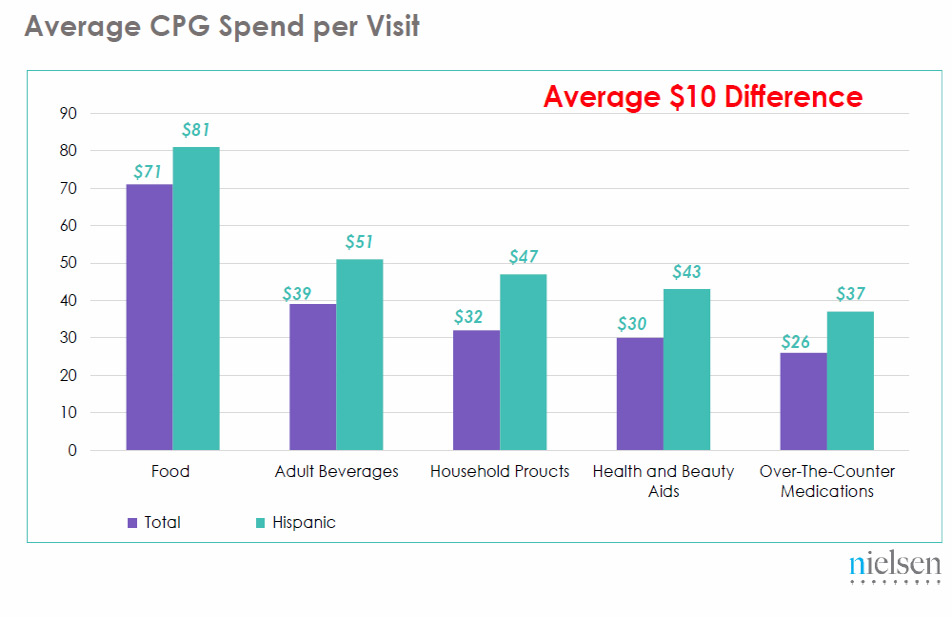
Product assortment and differentiation are key to competing with three of AWG’s main competitive threats: mass retailers, small format discount chains like Aldi and Dollar General, and national supermarket chains. Providing the right assortment reduces consumers’ need to rely on Amazon and other fulfillment options to complete shopping lists allowing them to find their needed ingredients at their local grocer.
What was thought of as natural, organic, and specialty foods 10 years ago, has changed considerably. The driving forces that have become core growth components for specialty food sales include:
- International foods
- Local/regional options
- “Food as Entertainment”
- “Food as Medicine”
Booming 10-year Growth
International foods have become a significant part of specialty foods growth. Just like the natural, organic and specialty foods category has evolved, so has the idea and concept of international foods. More authentic flavors, products and ingredients are becoming relevant. The current demand is shifting from Americanized ethnic food to authentic and traditional flavors.

This demand is being driven by an increase in Hispanic and Asian populations, but also the growing “Food as Entertainment” and restaurant cooking at home expansion. Both Hispanic and authentic Asian foods are challenging the overall natural, organic and specialty food segment for total sales increases. With the proliferation of network food shows and increased international travel, combined with an explosion of ethnic fusion flavors and international restaurants, we have seen a significant expansion in sales over the past 10 years. When adding the impacts of COVID-19 restrictions and the boom of creating restaurant-style meals cooked at home, we see a dramatic change in the way we look at international food opportunities.
Shopper Demographics
Both Hispanic and Asian shoppers traditionally have the largest average shopping basket. This is due to large families and larger purchases of fresh produce, meat and seafood.
- The purchasing power controlled by the Hispanic population is growing faster than any other population group.
- Currently, in the U.S., Hispanic households are younger and have a remaining spending lifespan of 14 years longer on average than non-Hispanic white households.
- If you combine Household purchasing with the purchasing years of the household, over the next 30 years, Asian and Hispanic households will have the largest potential sales impact of any demographic.
- Currently, the purchasing power of Hispanic shoppers in the U.S. is $1.7 trillion and is projected to hit $2 trillion by 2024. For comparison, the total GDP of Mexico is $1.4 trillion. The U.S. Hispanic purchasing power is larger than the 16th largest economy in the world.

To stay competitive, AWG retailers must attract Hispanic and Asian consumers. By offering the right product assortment and differentiation for these consumers, retailers will also attract consumers shopping for “Food as Entertainment” and looking to expand home meals into more authentic avenues.







